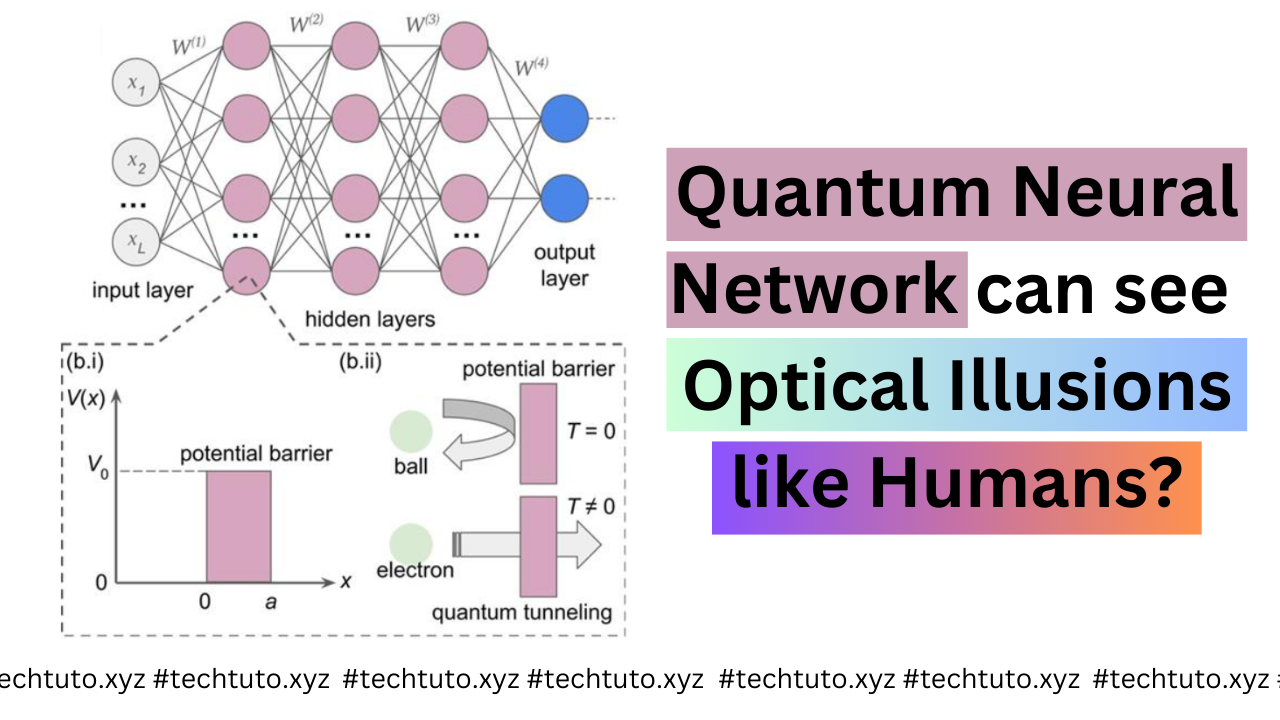Hey guys, today we will talk about the quantum neural networks, could it see the optical illusions? We know that topic is quite unrelated at the first glance but however, we have used a quantum tunneling to make a neural network that can see an optical illusions in very similar way like we humans do. So read this post till the end to know about something new in the field of an artificial intelligence.
Table of Contents
Why an Optical Illusions?
An optical illusions forces our brain to see the things which are may be real or may be not. We cannot totally understand that how actually the optical illusions works but learning can teach us about the brain like how our brain is work and how it fails sometime in such a cases like the dementia and so on.
Nowadays, Researchers are using the different ai technologies to emulate and can learn the human vision which can found an optical illusions which may raise an issue. While the computer vision systems can recognise the objects or patterns such as the writings ot an art, It’s often cannot be the optical illusions. So the model we are going to talk about is can appear to recognise at least some kind of an illusions and outcomes will need to checks further.
Also Read: Quantum Computing in AI
How does the Neural Network Works in Optical Illusions?
If we talk about the human brain, It process the information which are the helpful or not for us, right? But the neural network imitaing the functions of the brian which are using the so many layers of an artificial neurons that are enabling it to store the some kind of data and after classifies that data as useful or not.
Neurons are been activated by the signals of their neighbours in neural network. Now imagine, Each of the neuron has the ability to jump over a brick an the wall to be turned on and signals from the neighbours bumps it increase higher and so higher until it reach the tops. Also the activation point are on the other side when that will reach at the top.
If we talk about the quantum mechanics then the small objects like an electrons can passes through the barriers via an effect which called as the quantum tunneling. In this case, Quantum tunneling lets the neurons to jump straight throught the wall to get an activation fuction point.
Why Quantum Tunneling?
Guys, If we talk about the 20th century then quantum tunneling allowed scientists or researchers to explain the phenomena such as like the radioactive decay. So that seems liked an impossible according to the classical physics rules. In 21th century, Scientists or the researchers were facing the problems in that like the thories of exmapling the human perceptron and the decision making process.
After that research has proven the tools from quantum mechanics which may help to explain the behaviour of the human kind and the process of decision making.
While the some have been suggest that the effects of quantum are plays the vital role in the brains so even if like don’t then we might still the find some rules of quantum mechanics which are the useful to the human thinking model. For an example, Algorithms of the Quantum Computations are the more sufficient than the classic old algos for the many of tasks.
So with this, We want to find out actually the what happened if quantum effects could the workings of a neural networks.
How does Quantum Tunneling Performs?
When we human see an optical illusions with the interpretations which are possiblle like the faces, cubes or etc, Researchers or scientists thinks that temporariy hold on both interpretations at on same time until the brains decide that which of these should be seen.
Now, If we talk about the very famous scenario of the schrondinger’s cat then it describes one cat in the bpox and the life depends on the decay of a quantum particles. So according to quantum mechanics, the particle could be in the 2 different states at the same time but the we observe that cat can likewise alive and dead.
So the quantum tunneling neural networks can the recognise the cube and the rubin’s vase illusions according thier training, so when we faced with an illusions as the input, it gets the output of other two interpretations.
Traditional neural networks makes the behavior that the network makes some ambiguos results, which is hovering between the two particular outputs which much like out brains can hold the interpretations together before the seting on.
For more details: Quantum Neural Network for Optical Illusion Recognition

